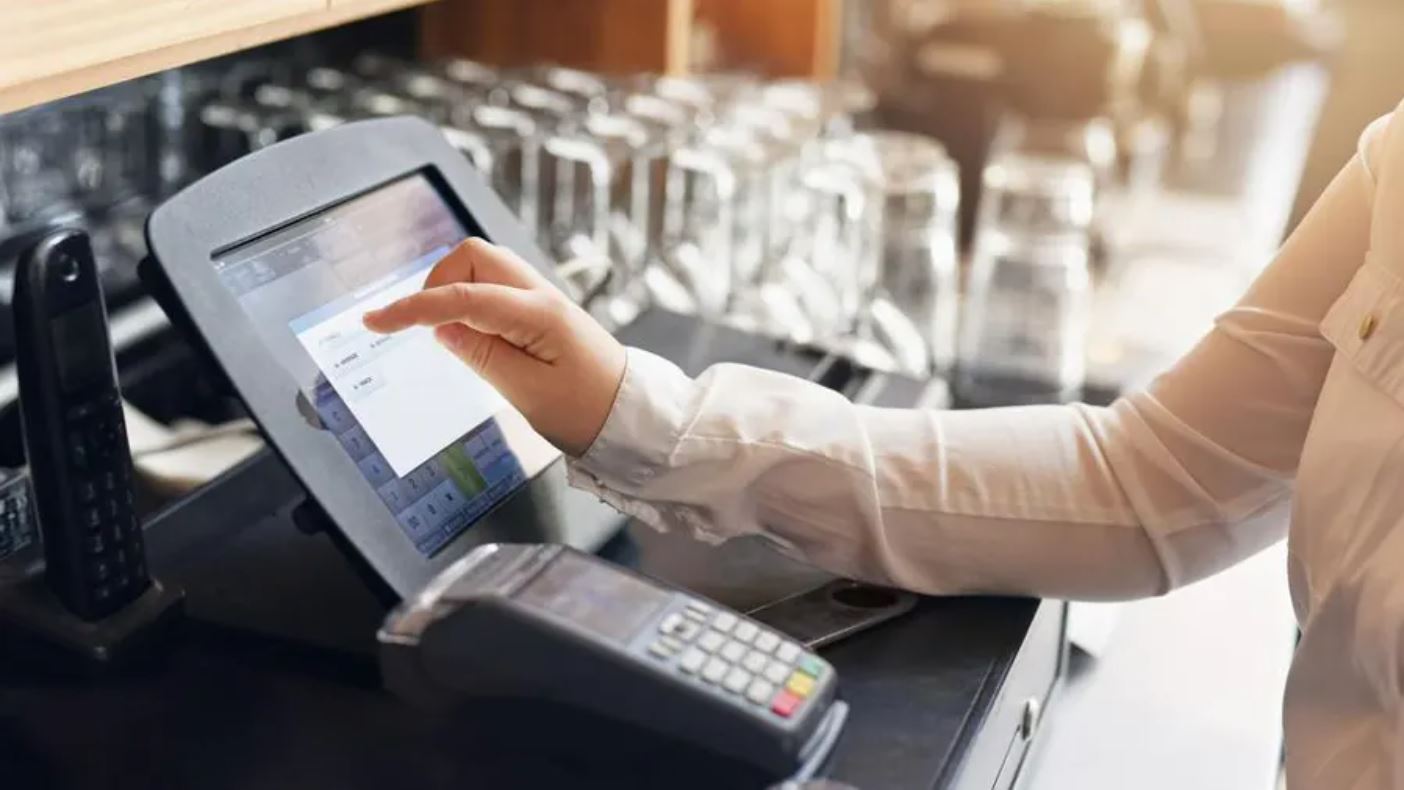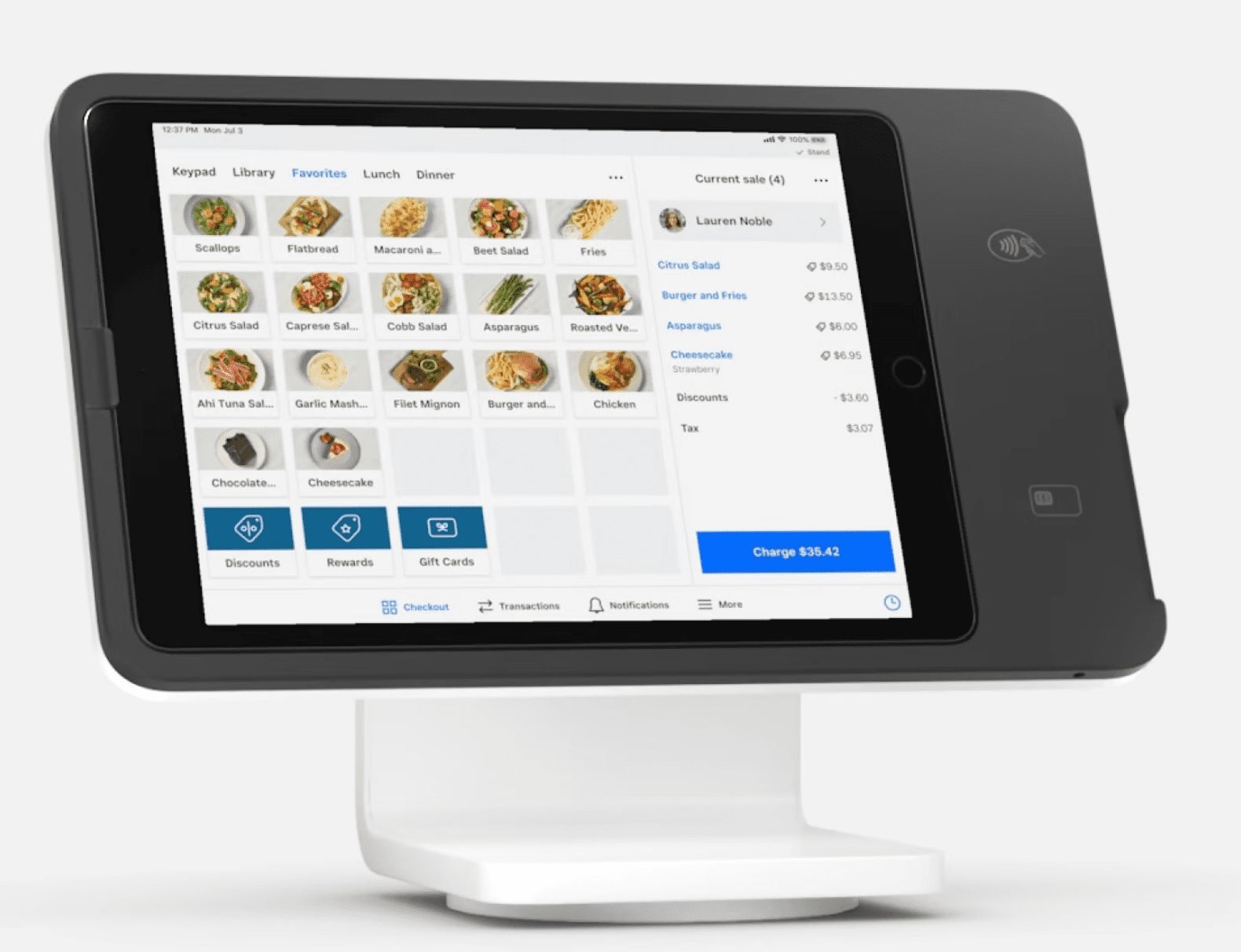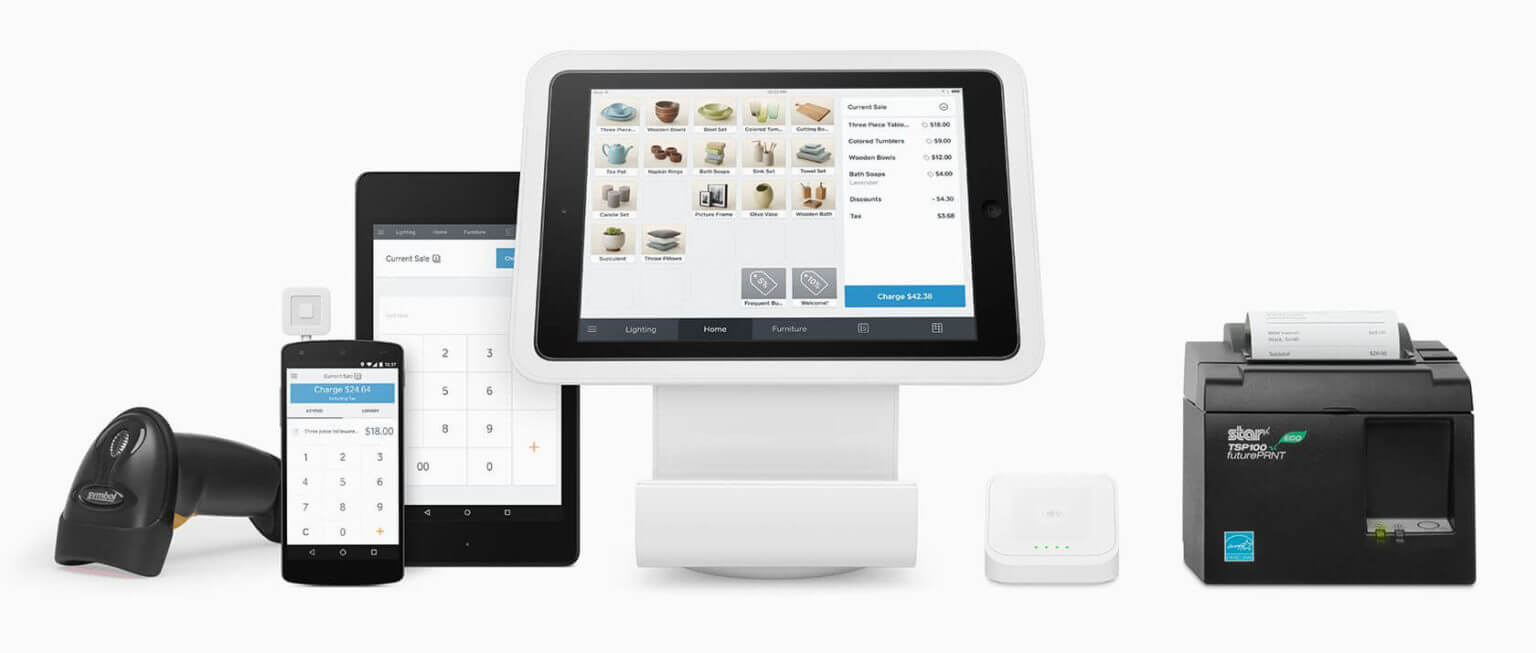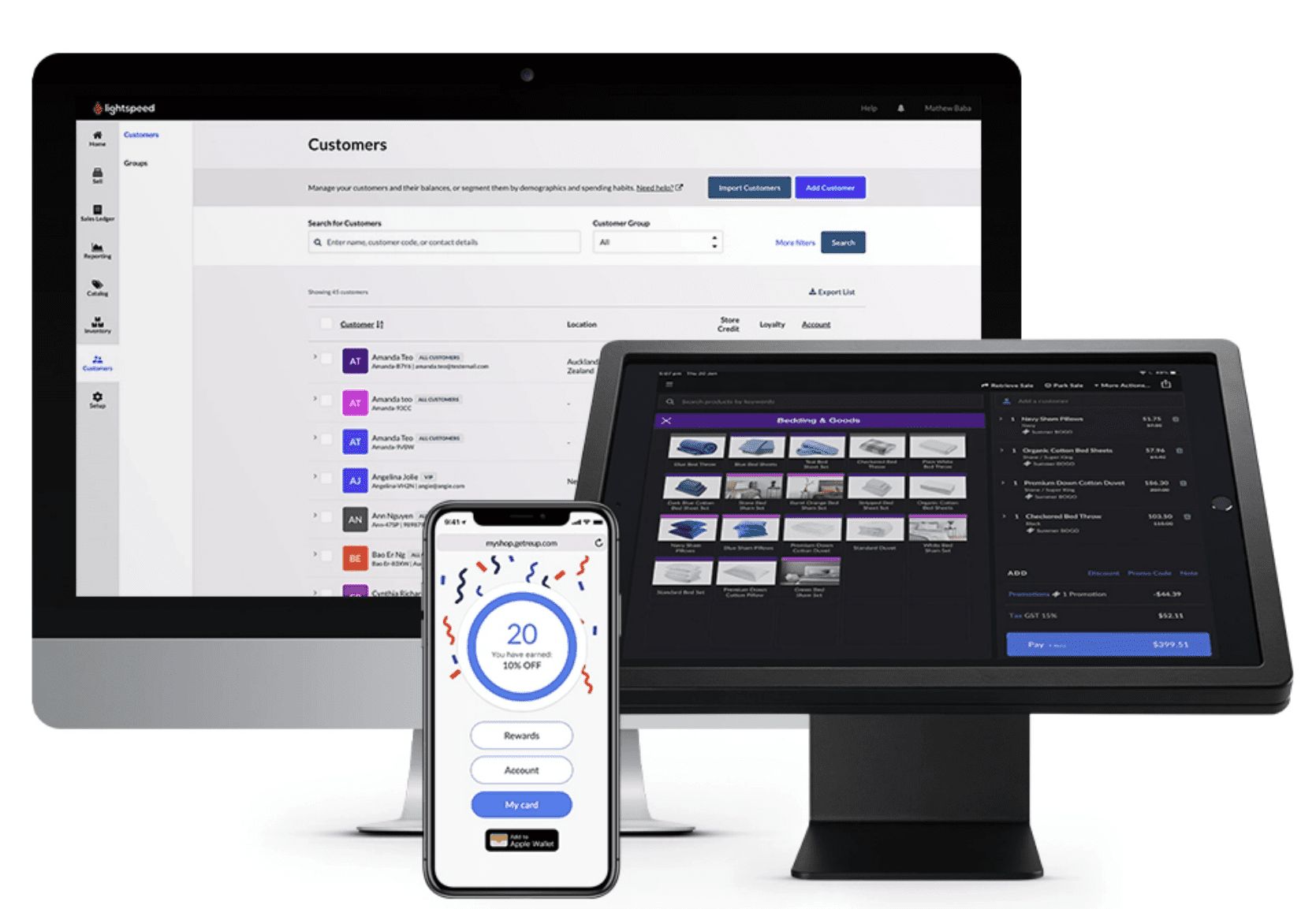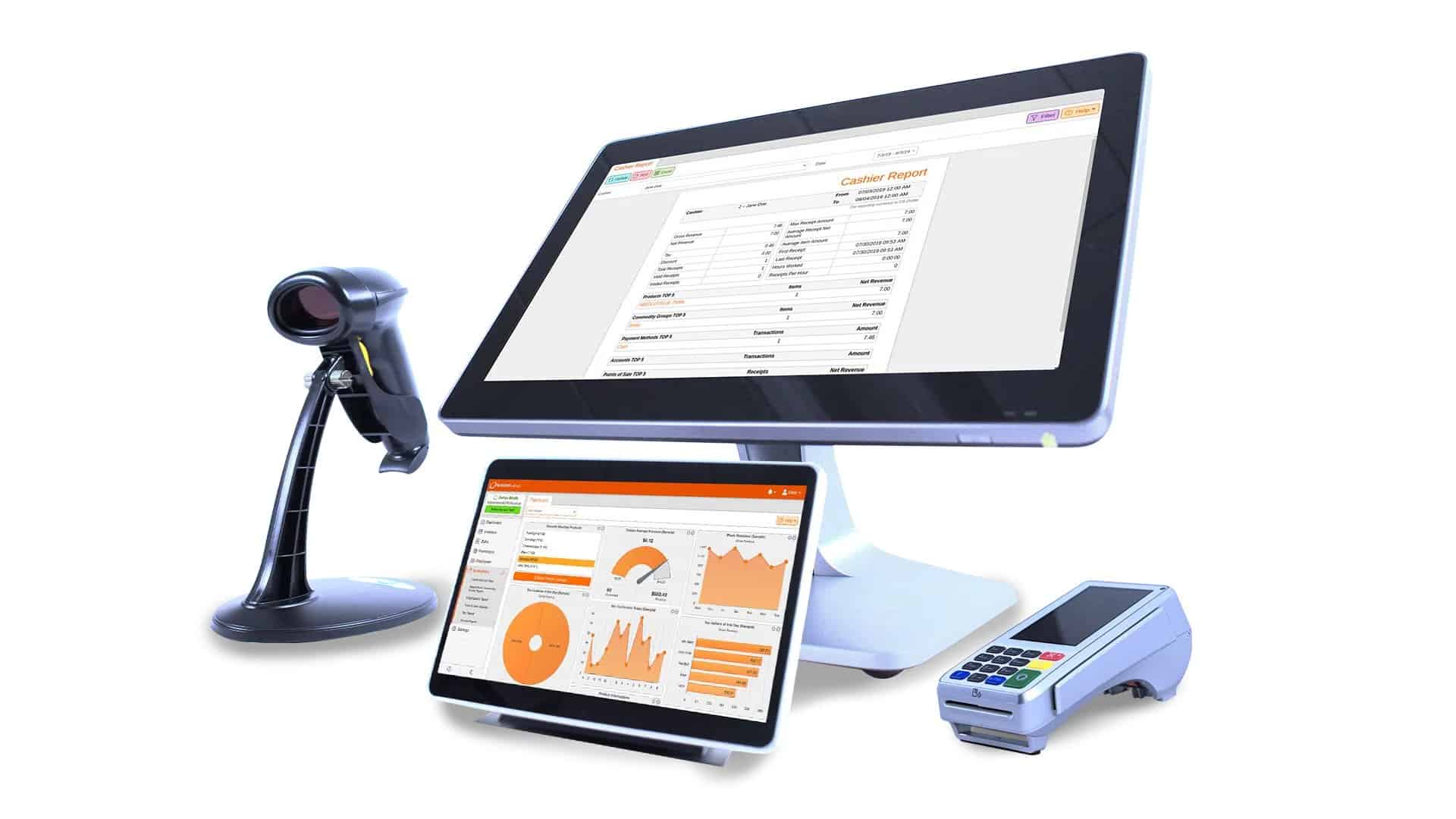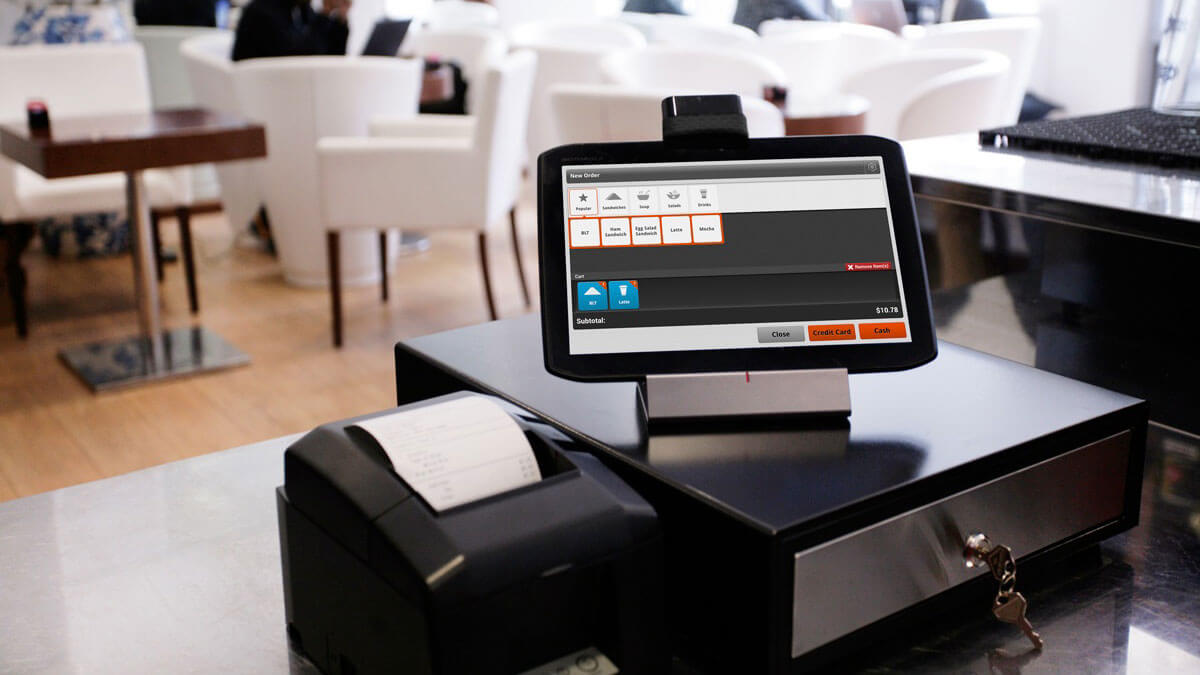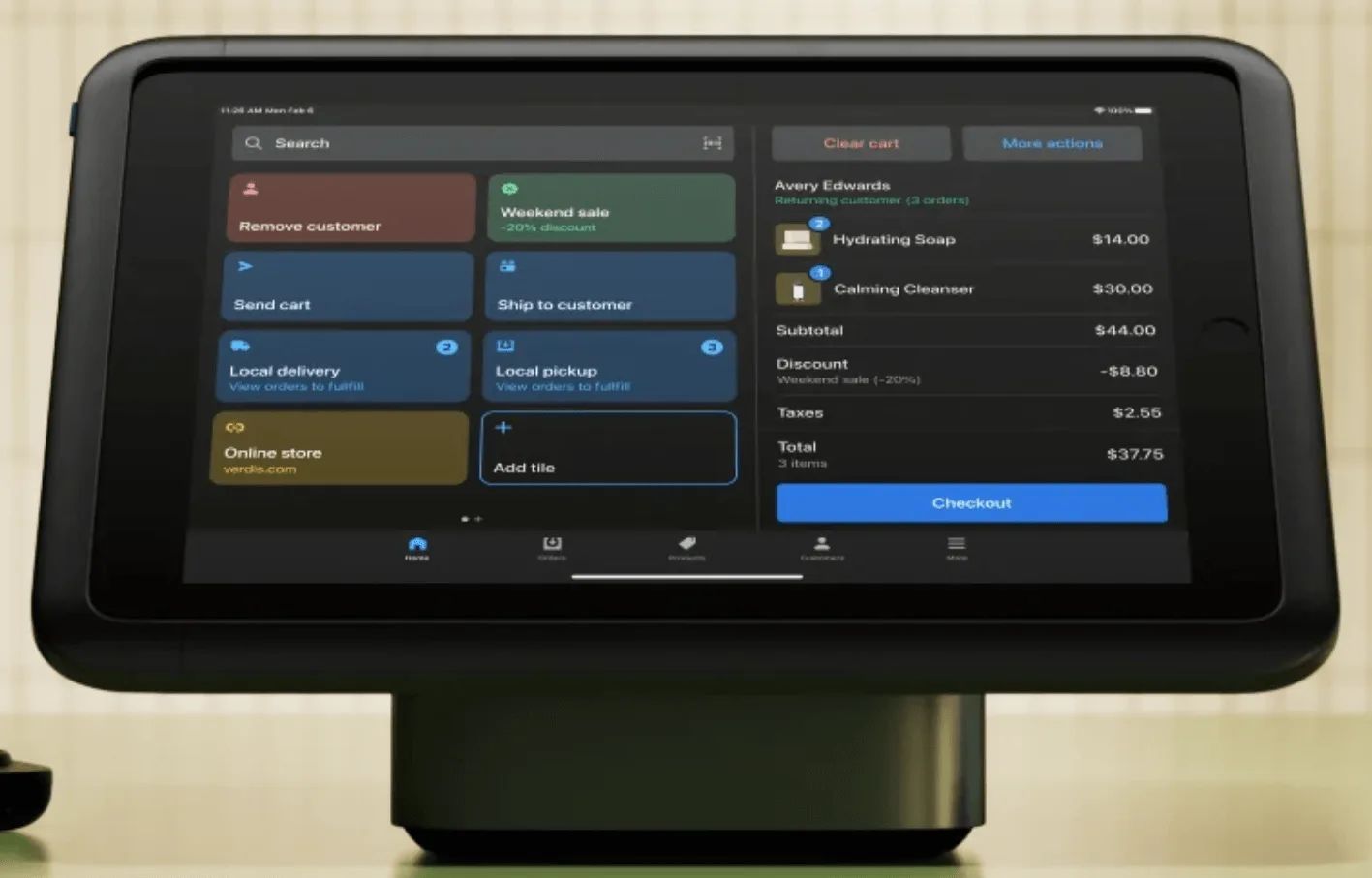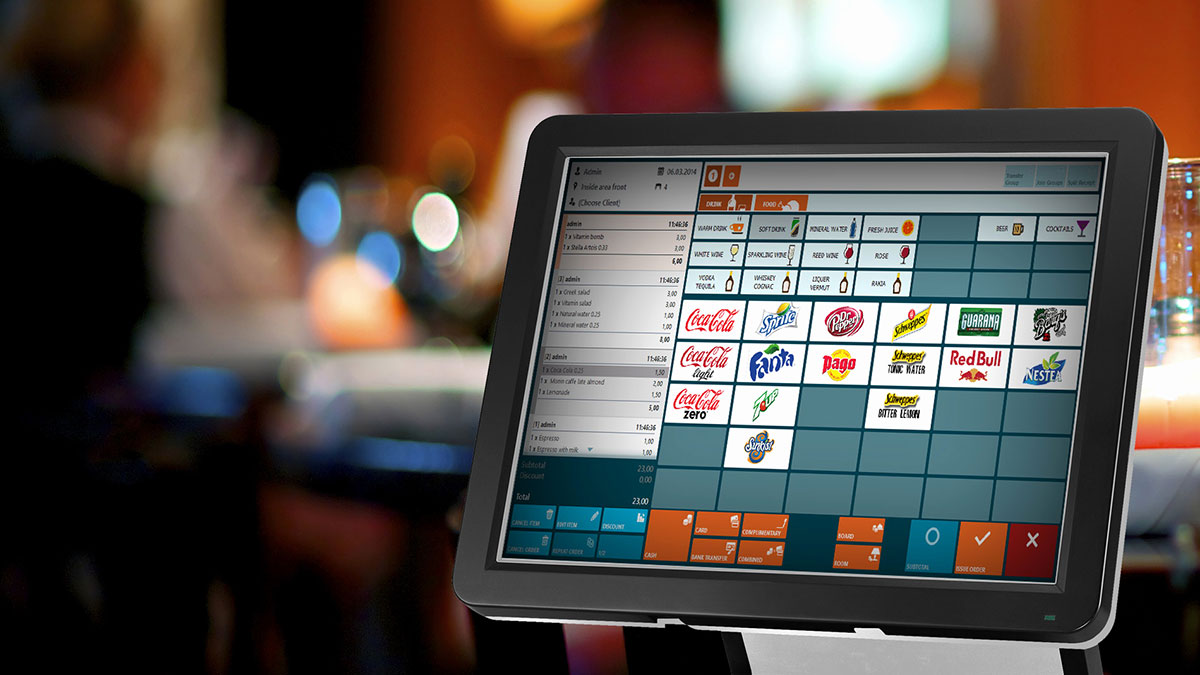Introduction
A Point of Sale (POS) system is an essential tool for businesses of all sizes. It is a combination of hardware and software that allows businesses to process transactions, manage inventory, and track sales. In today’s fast-paced digital world, a reliable and efficient POS system is crucial for streamlining operations and providing excellent customer service.
Traditionally, POS refers to the physical location where a transaction takes place, typically a cash register or a checkout counter. However, with the advent of technology, the term POS has come to encompass a wide range of systems, including cloud-based solutions and mobile devices.
Whether you own a retail store, a restaurant, or an online business, implementing a POS system can revolutionize the way you manage your operations. It can simplify the checkout process, automate inventory management, generate reports, and provide valuable insights into your business performance.
Throughout this article, we will delve into the meaning, features, benefits, and various types of POS systems. We will also explore how these systems work and discuss the key components to consider when choosing the right POS system for your business. Additionally, we will highlight some common mistakes to avoid during the implementation process.
By the end of this article, you will have a comprehensive understanding of POS systems and why they are crucial for modern businesses. Whether you are looking to upgrade your existing system or exploring options for a new business venture, this article will provide you with valuable insights to make informed decisions.
So, let’s get started and discover the world of POS systems and how they can transform your business operations!
Definition of POS System
A Point of Sale (POS) system is a combination of hardware and software that enables businesses to complete sales transactions. It serves as the central hub for processing payments, managing inventory, generating reports, and tracking customer data. Essentially, a POS system acts as the backbone of a business’s retail operations.
In a traditional sense, a POS system typically consists of a cash register, barcode scanner, receipt printer, and a display for the customer to view the transaction details. However, with advancements in technology, the concept of POS systems has evolved to include cloud-based solutions and mobile applications.
Cloud-based POS systems store data on remote servers, allowing businesses to access their sales and inventory information from anywhere with an internet connection. Mobile POS systems, on the other hand, utilize smartphones or tablets as the primary device for processing transactions, eliminating the need for bulky hardware.
Regardless of the specific hardware or software used, the primary purpose of a POS system remains the same – to streamline the checkout process, simplify inventory management, and provide accurate sales data.
One of the key defining features of a POS system is its ability to process various forms of payment, including cash, credit cards, debit cards, mobile wallets, and even cryptocurrency. By offering multiple payment options, businesses can cater to the diverse preferences of their customers, resulting in enhanced customer satisfaction and increased sales.
Furthermore, a modern POS system often includes additional functionalities such as customer relationship management (CRM), loyalty program integration, sales analytics, and employee management features. These added capabilities enable businesses to develop personalized customer experiences, improve marketing strategies, and make informed decisions based on real-time data.
Overall, a POS system is an essential tool for businesses across industries, regardless of their size or type. By implementing a reliable and efficient POS system, business owners can optimize their operations, streamline the checkout process, and gain valuable insights into their sales and inventory performance.
Features of POS System
A modern Point of Sale (POS) system comes equipped with a multitude of features that are designed to streamline business operations, improve efficiency, and enhance the overall customer experience. Let’s explore some of the key features offered by a typical POS system:
- Inventory Management: A POS system allows businesses to efficiently manage their inventory by tracking stock levels in real-time. It provides the ability to set automatic reorder points, generate purchase orders, and monitor product movement. By keeping a close eye on inventory, businesses can avoid stockouts and ensure they always have the right products available for their customers.
- Sales Tracking: POS systems provide businesses with detailed sales data, allowing them to monitor performance and make informed decisions. Sales reports can be generated on-demand, providing insights into top-selling products, peak sales periods, and customer preferences. This information helps in optimizing pricing, promotional strategies, and identifying opportunities for growth.
- Payment Processing: A crucial feature of any POS system is its ability to process various forms of payment securely and efficiently. Whether it’s cash, credit cards, debit cards, mobile wallets, or even cryptocurrency, a POS system ensures smooth and reliable payment transactions, minimizing errors and reducing the risk of fraud.
- Customer Relationship Management (CRM): Many POS systems come integrated with CRM functionalities, allowing businesses to build and maintain strong relationships with their customers. This includes capturing customer information, tracking purchase history, implementing loyalty programs, and sending targeted promotions or personalized offers. By understanding customers better, businesses can deliver a more personalized and tailored shopping experience.
- Employee Management: POS systems often provide features to manage employee schedules, track hours worked, and calculate commissions. This simplifies payroll management, reduces administrative burden, and ensures accurate compensation for employees. Additionally, it allows businesses to monitor employee performance and identify areas for improvement.
- Integration Capabilities: A modern POS system should have the ability to integrate with other essential business tools and software. This includes integration with accounting software, e-commerce platforms, marketing automation systems, and more. Integrations streamline processes, reduce manual data entry, and improve overall efficiency.
These are just a few examples of the features commonly found in POS systems. Depending on the specific needs and requirements of a business, additional features can be tailored to suit their unique operations.
By leveraging the comprehensive features offered by a POS system, businesses can simplify daily operations, enhance productivity, and ultimately provide an exceptional customer experience.
Benefits of POS System
Implementing a Point of Sale (POS) system offers numerous benefits and advantages for businesses of all sizes and types. Let’s explore some of the key benefits that a POS system can bring:
- Efficiency: A POS system automates and streamlines various aspects of the business, making day-to-day operations more efficient. Tasks such as inventory management, sales tracking, and payment processing can be done quickly and accurately, saving time and reducing human error.
- Improved Accuracy: Manual entry of sales and inventory data can lead to errors, resulting in discrepancies and inaccuracies. A POS system minimizes the risk of mistakes by automating these processes and maintaining a centralized database of accurate and up-to-date information.
- Enhanced Customer Experience: A POS system enables businesses to provide a seamless and personalized customer experience. It allows for faster checkout times, flexible payment options, and easy access to customer information such as purchase history and preferences. This helps in delivering a more tailored and satisfying shopping experience, leading to increased customer loyalty and satisfaction.
- Better Inventory Management: With a POS system, businesses gain real-time visibility into their inventory levels and product performance. This enables proactive inventory management, reducing stockouts and overstock situations. It also helps in identifying popular products and understanding sales trends, allowing businesses to make data-driven decisions about inventory replenishment and future stock orders.
- Accurate Sales Reporting: A POS system provides detailed sales reports, offering valuable insights into business performance. These reports can include information such as sales volume, revenue, profit margins, and even category or product-specific data. By harnessing this data, businesses can identify sales patterns, track performance, and make informed decisions to optimize their strategies and maximize profitability.
- Improved Employee Management: POS systems often come with employee management features such as time tracking, shift scheduling, and performance monitoring. These tools help in streamlining employee management processes, ensuring accurate payroll calculations, and providing insights into staff productivity and performance.
- Security and Fraud Prevention: POS systems offer built-in security features that help protect businesses against scams and fraudulent activities. These systems encrypt customer payment data, implement secure authentication methods, and provide transaction records, making it easier to detect and investigate any potential fraudulent activities.
- Scalability: As businesses grow, their needs evolve. A POS system is designed to be scalable, allowing businesses to expand their operations without disrupting their system. It can accommodate higher transaction volumes, handle additional product lines, and seamlessly integrate with new software or hardware as required.
These are just a few examples of the benefits that a POS system can offer. Ultimately, a well-implemented and efficient POS system can significantly improve overall business operations, increase productivity, and contribute to long-term growth and success.
Different Types of POS Systems
With advancements in technology and the evolving needs of businesses, various types of Point of Sale (POS) systems have emerged to cater to different industries and operational requirements. Let’s take a look at some of the different types of POS systems available today:
- Traditional On-Premise POS: This type of POS system involves the installation of software on local servers or computers within the business premises. It requires specific hardware, such as cash registers, barcode scanners, and receipt printers. On-premise POS systems offer a high level of customization but often come with higher upfront costs and maintenance responsibilities.
- Cloud-Based POS: Cloud-based POS systems have gained popularity in recent years due to their flexibility and accessibility. These systems store data on remote servers, accessible from any device with an internet connection. Cloud-based systems offer real-time updates, automatic software updates, and the ability to manage multiple locations from a single interface. They are cost-effective and reduce the need for expensive hardware maintenance.
- Mobile POS: Mobile POS systems leverage smartphones, tablets, or other mobile devices as the primary point of sale. They are especially popular in restaurants, food trucks, and retail environments where mobility is crucial. Mobile POS systems offer features like tableside ordering, digital menus, and wireless payment processing, enabling businesses to serve customers quickly and efficiently.
- Self-Service Kiosk: Self-service kiosks allow customers to browse and select products themselves, place orders, and make payments without the need for direct interaction with sales staff. These kiosks are commonly used in quick-service restaurants, cinemas, and retail stores. Self-service POS systems improve efficiency by reducing queues and freeing up staff to focus on other tasks.
- E-commerce POS Integration: As online sales continue to grow, businesses often require integration between their website and physical store inventory. E-commerce POS integration allows businesses to manage their inventory, process orders, and track sales across multiple channels from a single system. This integration helps in maintaining accurate stock levels and seamless customer experiences, regardless of the sales channel used.
- Industry-Specific POS: Certain industries have unique needs that require specialized POS systems. For example, hospitality POS systems cater specifically to restaurants and hotels, with features like table management, menu customization, and integration with kitchen display systems. Similarly, retail POS systems offer features such as barcode scanning, inventory tracking, and loyalty program integration to meet the specific requirements of retail businesses.
It’s important for businesses to consider their industry, operational needs, and future growth plans when choosing a POS system. Understanding the different types of POS systems available allows business owners to make an informed decision and select a system that aligns with their specific requirements.
How POS Systems Work
A Point of Sale (POS) system is designed to facilitate and streamline the sales transaction process. Let’s explore the typical workflow of how POS systems work:
- Product Selection: When a customer is ready to make a purchase, the sales associate or cashier uses the POS system to select the products or services the customer wishes to buy. This can be done by scanning barcodes, manually entering product codes, or selecting items from a pre-defined menu.
- Price Calculation: The POS system automatically retrieves the price of each selected item from the product database. It calculates the total cost, taking into account any applicable taxes, discounts, or promotions.
- Payment Processing: The POS system offers various payment options, such as cash, credit cards, debit cards, mobile wallets, or electronic fund transfers. The customer selects their preferred payment method, and the sales associate or cashier processes the payment through the POS system. The system securely transmits payment data to the payment processor for authorization.
- Receipt Generation: After the payment is successfully processed, the POS system generates a receipt for the customer. This receipt includes a record of the transaction, the items purchased, the payment method used, and any applicable discounts. The receipt can be printed or sent digitally via email or SMS.
- Inventory Management: Simultaneously, the POS system updates the inventory database, deducting the sold items from the available stock. This helps businesses keep track of their inventory levels, automatically triggering reorder points when certain products reach a predefined threshold.
- Sales Reporting and Analytics: POS systems capture valuable sales data that can be used for reporting and analysis. Businesses can generate reports to gain insights into their sales performance, identify top-selling products, and track trends over time. These data-driven insights help businesses make informed decisions about pricing, inventory management, and marketing strategies.
Modern POS systems often feature additional functionalities, such as customer relationship management (CRM), loyalty program integration, and employee management tools. These features enhance the overall capabilities of the system and enable businesses to provide a personalized and efficient customer experience.
POS systems are designed to be user-friendly, allowing sales associates and cashiers to quickly learn and navigate the system. The intuitive interfaces and streamlined workflows enable faster transactions, reducing customer wait times and improving overall operational efficiency.
Overall, POS systems play a crucial role in managing sales transactions, inventory, and customer data. By automating and integrating these processes, businesses can enhance efficiency, optimize sales performance, and provide a seamless customer experience.
Key Components of a POS System
A Point of Sale (POS) system consists of several key components that work together to facilitate sales transactions and manage various aspects of a business. Let’s explore the essential components that make up a typical POS system:
- Hardware: POS hardware includes the physical devices necessary for processing sales transactions. This typically includes a cash register, barcode scanner, receipt printer, customer display, and a payment terminal. Additional hardware components might include a server, computer or tablet, and a physical inventory scanner for larger businesses.
- Software: The software component of a POS system provides the user interface and functionality for managing sales transactions, inventory, and other business operations. It allows for product selection, price calculation, payment processing, and generates reports. The software can be a locally installed application or a cloud-based software accessed through the internet.
- Barcode scanner: Barcode scanners are used to quickly and accurately scan product barcodes, retrieving product information and pricing details from the system’s database. This component ensures efficient and error-free product identification during the checkout process.
- Receipt printer: A receipt printer generates printed receipts for customers after the completion of a sale. It provides a record of the transaction details and serves as proof of purchase. Receipt printers can be thermal, dot matrix, or inkjet depending on the specific requirements of the business.
- Payment terminal: The payment terminal allows businesses to accept different forms of payment, such as cash, credit cards, debit cards, contactless payments, and mobile wallets. It securely processes and authorizes payments, ensuring a seamless and secure transaction experience for both the business and customers.
- Customer display: The customer display is a screen that shows the transaction details, payment amount, and promotional or marketing messages. This component enhances transparency and allows customers to verify the accuracy of their purchase before making a payment.
- Software integrations: A robust POS system integrates with other essential software or third-party applications. This can include accounting software, e-commerce platforms, inventory management tools, customer relationship management (CRM) systems, and more. Integrations help streamline processes, reduce manual tasks, and provide a more comprehensive and connected solution for businesses.
- Backup and security: To ensure data integrity and protect against potential loss, a POS system should have backup and security measures in place. This can include regular data backups, encrypted payment processing, user authentication, and access controls to prevent unauthorized access to the system.
Each component of a POS system works together to provide a seamless and efficient sales transaction process. The hardware facilitates the physical aspects, while the software enables the management and organization of data. By leveraging these key components, businesses can optimize their operations, provide excellent customer service, and gain valuable insights into their sales performance.
Choosing the Right POS System for Your Business
When selecting a Point of Sale (POS) system for your business, it’s important to consider various factors that align with your specific operational needs, industry requirements, and growth plans. Here are some key considerations to help you choose the right POS system:
- Business Type: Consider the nature of your business, whether it’s a retail store, restaurant, or service-based establishment. Different industries may have specific POS system requirements, such as table management features for restaurants or inventory tracking capabilities for retail stores.
- Scalability: Assess your business’s growth potential and ensure that the POS system can scale accordingly. Consider factors such as the ability to add more hardware devices, accommodate increased transaction volumes, and integrate with other tools or platforms as your business expands.
- Features and Functionality: Identify the key features and functionalities that are important for your business operations. Make a list of must-have features, such as inventory management, sales reporting, CRM capabilities, or integration with other software that you currently use.
- User-Friendliness: Consider the ease of use and learnability of the POS system. A user-friendly interface and intuitive workflows will enable your staff members to quickly adapt to the system and perform transactions efficiently, reducing training time and potential errors.
- Hardware Requirements: Evaluate the hardware components required for the POS system. Consider factors such as space availability, hardware cost, speed, and reliability. Determine whether the system supports your preferred devices, such as cash registers, barcode scanners, or receipt printers.
- Software Deployment: Decide whether you prefer an on-premise or cloud-based POS system. On-premise systems offer greater control but may require additional hardware and maintenance, while cloud-based systems offer convenience, accessibility, and automatic software updates.
- Integration Capabilities: Determine whether the POS system can integrate with other essential software and third-party applications that you use for accounting, inventory management, or e-commerce. Integration streamlines data flow and reduces manual data entry, improving efficiency and accuracy.
- Support and Maintenance: Consider the level of support and maintenance provided by the POS system provider. Ensure that they offer timely technical assistance, frequent software updates, and reliable customer support to address any issues that may arise.
- Cost: Evaluate the total cost of ownership, including upfront costs, monthly fees, transaction fees, and any additional costs for hardware, software upgrades, or support services. Consider the return on investment and weigh it against the benefits and value provided by the system.
Taking these factors into account will help you select a POS system that aligns with your business goals and requirements. It’s also advisable to request demonstrations or trials, consult with other businesses in your industry, and gather feedback from existing users to make an informed decision.
Remember, choosing the right POS system is a crucial investment for the success of your business, as it will impact daily operations, sales management, and customer experience.
Common Mistakes to Avoid when Implementing a POS System
Implementing a Point of Sale (POS) system can greatly benefit your business, but it’s important to avoid common pitfalls that can hinder its successful implementation. Here are some common mistakes to avoid when implementing a POS system:
- Inadequate Planning: Failing to plan adequately before implementing a POS system is a common mistake. It’s important to define your business requirements, conduct thorough research, and create a detailed implementation plan to ensure a smooth transition.
- Choosing the Wrong System: Selecting a POS system that doesn’t meet the specific needs of your business can lead to functionality gaps and inefficiencies. Conduct a comprehensive evaluation of available options and select a system that aligns with your industry, business type, and growth plans.
- Insufficient Staff Training: Neglecting to provide thorough training to your staff members can result in confusion and mistakes during operations. Invest in comprehensive training programs to ensure that all users are proficient in using the POS system and its features.
- Poor Data Migration: If you’re transitioning from an existing system, migrating data seamlessly is crucial. Improper data migration can lead to inaccuracies, missing information, or data corruption. Ensure that data is transferred accurately and validated before going live with the new system.
- Lack of Integration: Not considering integration capabilities can hinder efficiency and productivity. Failure to integrate the POS system with other essential tools or software can result in duplicate data entry, reporting discrepancies, and overall inefficiencies. Ensure compatibility and seek integration with existing systems where necessary.
- Ignoring Security Measures: Neglecting to implement robust security measures can put your business and customers at risk. Ensure the POS system complies with security standards, encrypts payment data, and provides features like user authentication and access controls to safeguard sensitive information.
- Inadequate Support and Maintenance: Failing to establish a support framework or neglecting regular system updates and maintenance can lead to issues and downtime. Ensure ongoing support and maintenance agreements are in place, and stay informed about software updates and patches to keep your POS system running smoothly.
- Overlooking Scalability: Business needs evolve over time, and a POS system should be scalable to accommodate growth. Plan for future requirements, such as multiple locations, increased transaction volumes, or additional functionalities. Choose a system that can scale with your business without disruption.
- Not Seeking User Feedback: Your staff members are the primary users of the POS system, and their feedback is invaluable. Involve them in the decision-making process, seek their input during implementation, and encourage ongoing feedback to identify areas for improvement and address any pain points.
Avoiding these common mistakes during the implementation of a POS system can help ensure a successful transition, maximize operational efficiency, and enhance the overall customer experience. Proper planning, staff training, data migration, security measures, support, and scalability considerations are key factors in achieving a seamless and effective POS system implementation.
Conclusion
A Point of Sale (POS) system is a powerful tool that can revolutionize your business operations and enhance the customer experience. Whether you own a retail store, restaurant, or online business, implementing the right POS system can streamline processes, improve efficiency, and provide valuable insights into your sales and inventory management.
In this article, we explored the meaning of POS systems, their features, benefits, and different types available. We discussed how POS systems work, the key components that make up a typical system, and the factors to consider when choosing the right POS system for your business.
Furthermore, we highlighted common mistakes to avoid during the implementation process, such as inadequate planning, poor staff training, data migration issues, lack of integration, and neglecting security and scalability considerations. By avoiding these mistakes, you can ensure a smooth transition and maximize the benefits of your POS system.
It is crucial to carefully evaluate your business requirements, industry-specific needs, and growth plans before selecting a POS system. Consider factors such as user-friendliness, hardware requirements, software deployment, integration capabilities, and ongoing support and maintenance. Taking the time to choose the right system will lead to increased operational efficiency, improved accuracy, and enhanced customer satisfaction.
In conclusion, a well-implemented POS system can be a game-changer for your business. It helps you streamline operations, optimize inventory management, boost sales, and provide exceptional customer experiences. By leveraging the features and capabilities of a POS system, you can drive your business forward, stay competitive, and achieve long-term success.







